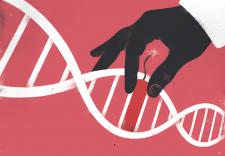Are we mapping a path to CRISPR babies?
By Katie Hasson and Marcy Darnovsky,
The Hill
| 09. 13. 2020
In November 2018, at a gene-editing “summit” hosted by scientific societies from the U.S., the U.K., and Hong Kong, a Chinese researcher announced that he had created the world’s first genetically modified babies. He Jiankui fully expected to be celebrated for a scientific breakthrough; he mentioned the Nobel Prize. Instead, he was almost universally condemned.
Key figures associated with the U.S. National Academies and U.K. Royal Society joined in the criticism but did not reject heritable genome editing. Instead, they objected to the Chinese researcher’s timing. It was too soon, they said. It hadn’t been done as they thought it should have been. But according to the researcher now being called a “rogue,” it was the National Academies’ 2017 report that had given him the green light for his experiments.
In the aftermath of this headline-grabbing debacle, the scientific societies decided on a do-over. They declared it time to “define a rigorous, responsible translational pathway” toward clinical use of heritable genome editing. They set up a carefully selected international commission with the mandate to map the scientific details...
Related Articles
By Jonathan Matthews, GMWatch | 12.11.2025
In our first article in this series, we investigated the dark PR tactics that have accompanied Colossal Bioscience’s de-extinction disinformation campaign, in which transgenic cloned grey wolves have been showcased to the world as resurrected dire wolves – a...
By Jenny Lange, BioNews | 12.01.2025
A UK toddler with a rare genetic condition was the first person to receive a new gene therapy that appears to halt disease progression.
Oliver, now three years old, has Hunter syndrome, an inherited genetic disorder that leads to physical...
By Simar Bajaj, The New York Times | 11.27.2025
A common cold was enough to kill Cora Oakley.
Born in Morristown, N.J., with virtually no immune system, Cora was diagnosed with severe combined immunodeficiency, a rare genetic condition that leaves the body without key white blood cells.
It’s better...
By Rachel Hall, The Guardian | 11.30.2025
Couples are needlessly going through IVF because male infertility is under-researched, with the NHS too often failing to diagnose treatable causes, leading experts have said.
Poor understanding among GPs and a lack of specialists and NHS testing means male infertility...




